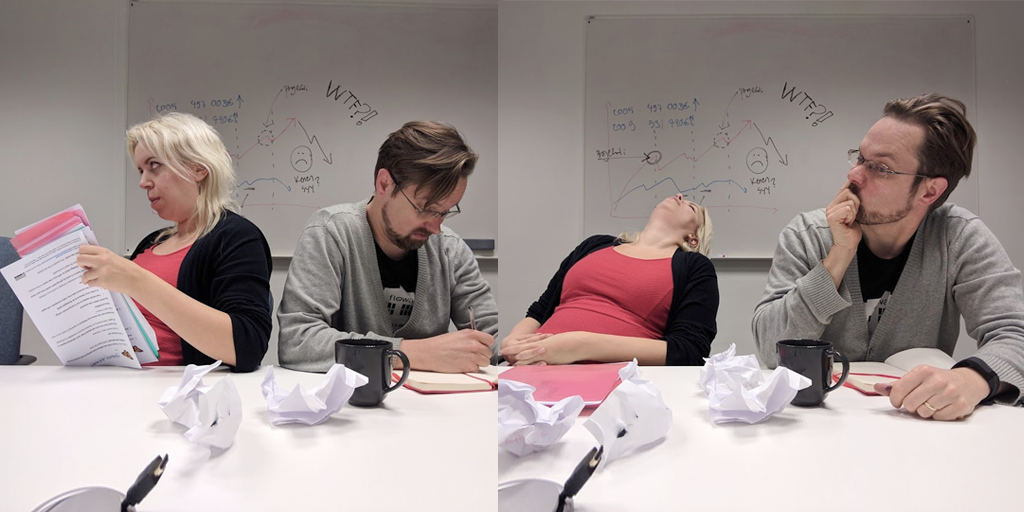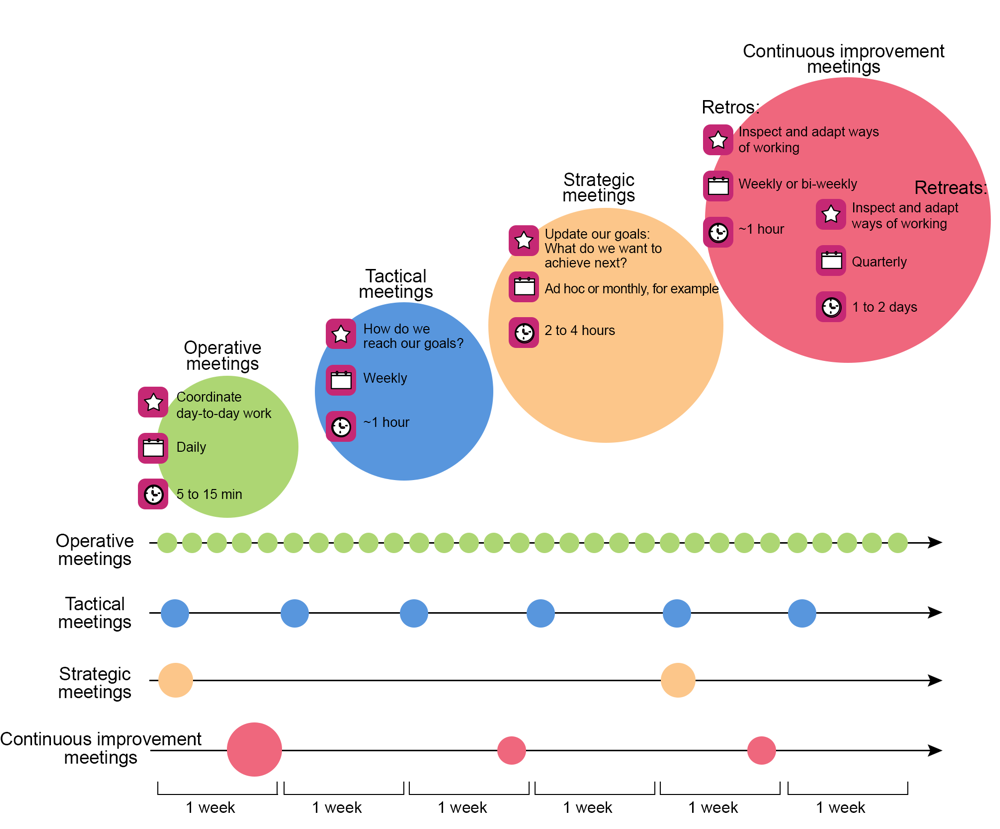
Many have given up on meetings.
Are we doomed to have soul-sucking meetings at work? Those that we need to be able to co-operate even remotely effectively?
My answer is that we can improve anything, step by step, if we really want.
Will an agenda fix our meetings?
The other day I ran a poll on Twitter, asking about the biggest challenges with meetings. Two answers stood out: 1) not being able to make decisions in meetings and 2) no agreed agenda for meetings.
These two are of course linked. As a matter of fact, preparing an agenda is a common tip from consultants for meetings.
That is a very risky piece of advice.

If you try to include everything in the meeting agenda, the resulting meeting will become tedious and long.
How preparing agendas can hurt your meetings? One thing is that every possible item gets into a meeting’s agenda. After that you realise you need more people in the meeting to resolve all the items.
This is how you brew a meeting stew with no head nor tail. Most of the agenda items concern only a minority of the meeting participants. And with a long list of items the meeting takes forever.
How could we make our meetings easier to focus on
With agendas, there is also the risk of having many different kind of agenda items in one meeting. Different kind of topics mean that the participants’ brains cannot keep up.
We have a very limited capacity for quality thinking of challenging problems. Tasks such as long-term planning, goal-setting and prioritisation need optimal circumstances.
If these kind of tasks are mixed with operational items in a meeting, it is hard to keep up. Even the brains of well-trained knowledge workers struggle to keep up with that. There is a real risk of switching to autopilot or frustration involved.
Our team at Flowa noticed this recently. The agendas of our twice a week meetings, which we have dubbed hangouts, have started to scatter. There are now very different things side by side:
- setting and following up weekly goals,
- looking at the status of our sales pipeline,
- approving invoices etc.
Activities such as setting longer-term goals have proven to be quite challenging for us in the midst of more mundane activities.
What could we try instead?
Instead of agendas, we should think about the purpose and the context of our meetings. We can use these to decide who participates and what kind of items are valid for the meeting.
In his business fable Death by Meetings, Patrick Lencioni offers a categorisation for purpose of the meeting. Here is our own adaptation of meeting purposes:

Four purposes for a meeting and what kind of meetings to have for those purposes, building on top of Patrick Lencioni’s model.
How to make use of this in practice
Here is an example from our own company, Flowa.
Let’s start with operative meetings. We will experiment having one or two operative meetings a week with our whole Flowa team. Most of us have different customer team contexts as well. They have their own operative meetings. That is why we do not see the need to invest in our own daily operative meetings.
Also, we want to experiment with dedicating one weekly meeting to tactical matters. In this meeting, we will:
- review last week’s goals and set this week goals,
- oversee our sales pipeline status and
- coordinate our work in tactical level.
Making a habit out of strategic and continuous improvement meetings would also make sense. We already have four F2F retreats a year for this purpose, but we schedule them ad hoc. that means they are in a constant risk of being neglected.
Especially shorter time-span continuous improvement meetings would be a good investment for us. To that end we are going to experiment arranging short (30 min to 1 hour) retrospectives. We will arrange them every two weeks on Flowa days, the days we work on together on our own business.
Sharing information in meetings
I’m sure you noted that sharing information is absent from our list of meeting purposes. That is not by mistake.
If you have a meeting with the purpose of information haring, such as a weekly status meeting, it is time to explore alternatives. You could experiment with making the meeting more active. That would mean changing the purpose and activities in the meeting.
Or you could experiment with different ways of sharing information instead of meetings. Some examples include
- visual management tools such as kanban boards or Trello,
- modern digital communication tools such as wikis,
- team chats like Slack or Flowdock,
- dashboards, information radiators etc.
Small steps towards more purposeful meetings
How to change your meetings for the better? Here is our step-by-step guide:
- Take your most painful meeting.
- Decide (together) what the purpose of that meeting should be.
- Re-design the meeting from that standpoint.
- Try it out and find out, if the meeting has improved.
- If the meeting has improved, go back to step 1. If not, go back to step 2.
I wish you short and meaningful meetings!
Nano-retrospective of a meeting
One good way to check if your meeting has improved is to facilitate a nano-retrospective at the end of a meeting. It goes like this:
- At the end of the meeting, ask everybody to evaluate the meeting’s usefulness on a scale from 0 to 5.
- Everybody uses their fingers to give a score.
- Count the approximate average and record it.
- Ask everybody what changes would have made them give a 5 for score.
- Record the improvement ideas.
This way you can get a shared understanding fast on how well the meeting went and how could you improve it. And after that, everyone can pitch in to improve the meeting.
What has worked for you?
What would be your tip to improve meetings? What improvement has worked for you? Please share in the comments.
